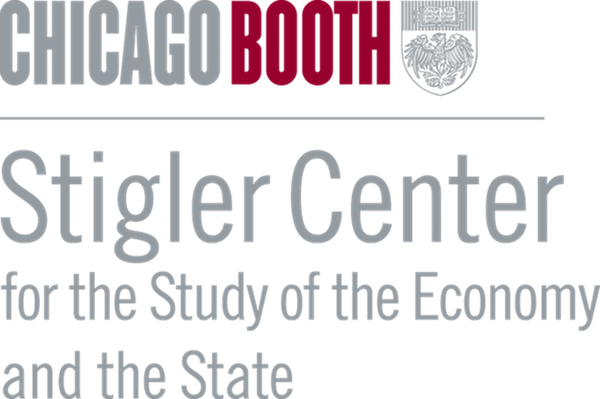Large digital platforms have evolved into vast multimarket/multiproduct conglomerates, both organically and through a decade-long acquisition spree. Conduct and mergers can no longer be evaluated “market-by-market.” Yet the antitrust assessment of these “ecosystems” is still in its infancy, and regulators seeking to explore harm arising from the control of multiple assets and capabilities are falling back on traditional theories of harm that are more likely to resonate with judges. Substantive progress is unlikely to emerge spontaneously from consultants or academia, and regulators will need to harness interest in this space by motivating and coordinating relevant policy research, argues Cristina Caffarra.
A handful of giants loom over the digital economy, each with a sprawling collection of businesses they either developed organically by exploiting complementarities and deploying fungible assets (data, customer bases, software, hardware) or acquired without scrutiny (too small, no turnover, no overlap, acquihires). Competitive advantages and bottlenecks can no longer be evaluated just “market by market.” What progress are we making in articulating this new reality in antitrust?
Very modest. In practice, the “use of economics” in antitrust cases has evolved into an “apex mannerism” of claims and near-total stagnation of analyses. Reports and white papers submitted to antitrust enforcement agencies invariably claim a deal or conduct is pro-competitive, market competition is fierce and dynamic, “markets function well,” and merging parties are not close rivals. Antitrust economists are providing like never before a veneer of science as a crutch to advocacy, submitting to regulators the same approaches, arguments, and analyses that have been in play for the past 20 years. Progress is thus not going to come from consultants embedded in the advocacy complex, whose function is to argue “there is nothing there, there.” On their part, most academics have limited visibility and incentives to weigh in and further policy “from the outside,” as antitrust policy questions are of limited interest for publication in peer-reviewed journals.
As management scholars have said for years, large digital firms perform a “coordinating function” across multiple assets and capabilities that are the source of their success and relative advantage. The conduct of these expanding ecosystems with growing reach and influence on consumers cannot be assessed “one market at a time” in isolation. Yet, in antitrust we still use “share” in a given market as an effective way to capture market power, and issues only possibly arise if a deal creates a material share overlap, or there is a specific mechanism through which a rival in market A can be foreclosed through power being leveraged from market B (e.g. through tying or bundling).
Established norms have served digital enforcement especially badly. Competitive advantage is driven by capabilities, not by share in a product market. Moreover, new capabilities we had not seen before have fast emerged and made markets more interconnected. But how do we discriminate between a benign outcome in which digital firms combine existing and new capabilities to create new products, and one in which they use them to create deeper moats around their services and entrench their power?
In Europe, the question has recently arisen in both the United Kingdom Competition and Market Authority’s review of Microsoft/Activision, and the European Commission’s review of in Booking/etraveli. In Microsoft/Activision, the CMA’s initial ecosystem concern was that the constellation of assets that Microsoft owned (OS, cloud, gaming portfolio, data, hardware) might have given it an unassailable competitive advantage in the incipient cloud gaming market when combined with the acquisition of Activision’s videogame content. In Booking/etraveli, the concern was that Booking’s acquisition of an adjacent activity (a travel booking channel) would have further strengthened their dominance in hotel booking platforms. But in common was the question: how should we probe whether market power is enhanced by an acquisition, without product overlaps, foreclosure, or leveraging? When can we pursue such a case for creating harm?
There is very little progress at present from industrial organization (IO) academe, the branch of economics that dominates antitrust. One minor step forward has recently come from Patrick Rey (respected Toulouse economist who assisted Booking in the EC case) and co-author Zhijun Chen. Their recent working paper on “conglomerate mergers” makes some progress towards formalizing ecosystem concerns in ways that the IO mainstream can relate to. The paper focuses on “consumption/demand-side synergies” that can materialize with the acquisition of an adjacent good (in Booking/etraveli, a customer acquisition channel). But “efficiency gains” at the customer level (e.g. transaction costs savings, potential offer of new goods or services) can also lead to strengthening dominance and softening competition. The main contribution of the paper is to explain how for harm to arise, one does not need to postulate a scenario in which post-deal harsher competition (between the firm offering bundled products and rivals offering standalone products) ultimately hurts standalone competitors (the “go to” theory of harm in conglomerate deals). In Rey and Chen, controlling a broader portfolio of products post-merger can soften competition between the merged firm, which can offer bundles, and the remaining standalone rivals. This is a step in the right direction, even though it is still formulated in a conventional IO framework.
But it is a tiny step. A much more significant concerted effort is required to articulate potential ecosystem concerns, not just from IO economists, but also network economists, business study scholars, and technologists. For unless antitrust enforcement agencies have more principled and structured tools available that they can use to develop new case law, they may fall back on traditional theories of harm that may not be a good fit, and judges will still reject their arguments.
This is not an abstract hypothesis. In Microsoft/Activision, the UK CMA retreated eventually from its initial “ecosystem” concern by repurposing its cloud gaming theory of harm into a conventional “input foreclosure” story in which Microsoft would have denied Activision content as an input to rival cloud gaming providers, thus achieving early dominance in a nascent market. Without more structure, the original theory of harm would have struggled had it reached the appeal courts. The United States Federal Trade Commission did run most of its litigation of Microsoft/Activision as an input foreclosure case (mainly of console, and then of cloud gaming), presumably to make the case more palatable to the court; but then this involved a high bar (vertical foreclosure) that the presiding judge in the Californian trial thought was not met.
In Amazon/iRobot, currently under review, the EC appears to have abandoned initial broader concerns around the acquisition of iRobot strengthening Amazon’s marketplace (perhaps including through accumulation of users’ data) and collapsed its Statement of Objection to a more conventional “input foreclosure” case, whereby Amazon would use its self-preferencing algorithms to favor iRobot over other robot cleaners on its marketplace. What will the inevitable flurry of cookie-cutter analyses of the respective costs and benefits of “disfavoring” another vacuum cleaner tell anyone? If one is serious about ecosystems, let’s think about them properly.
What gives? At a recent London event discussing “the rise of ecosystem cases,” the most senior UK competition judge was concerned about agencies asking him “to peer into the crystal ball,” i.e., putting forward speculative cases on incipient markets where no real evidence was available. The CMA chief economist responded that in these cases one really had to look at incentives. While this is true, one can also expect that agency narratives on incentives will be hotly contested (“you did not read the documents correctly, you are projecting motives on the business that aren’t there”). So, we need more.
This matters not just for mergers. In conduct cases, theories of harm are typically expressed in terms of effects in a specific market. But again, large digital platforms are operating a constellation of activities using common assets and capabilities. Enforcement has been mostly focused on a specific practice and market, when we need to understand how different pieces of the ecosystem sustain and support exclusionary or exploitative conduct in other parts. Companies and their consultants will always seek to “break it down” and argue that the total is no greater than the sum of the parts: there is no such thing as an “ecosystem,” each piece of conduct is rational in its own terms, and presence across multiple activities adds nothing to the assessment.
If economic consultants are not going to develop useful analytics for our times, and academics are not going to invest spontaneously into thinking about the issue, what needs to happen? A key avenue should be for the antitrust enforcement agencies to convene multidisciplinary study groups with a combination of IO, network economics, business studies, and data science angles. They must make available data and documents for detailed case studies. The agencies’ coordination role will be essential in my view to harness cooperation and investment from relevant fields and establish a credible approach which is not about “size per se” but will map out concerns and limiting principles. This is too important to be left to emerge organically, which it will not without agency coordination and commitment. While agencies are resource constrained, they could play a convener/coordination role as there is external appetite to support a vision of antitrust as “agent for change.” Contrary to a view that antitrust assessment should be somehow based on immanent rules, we need to update to “how competition presents itself.” Pretending we had achieved wisdom once and for all in how we do assessments, and everything can be fit today into a reassuring version of “what we have always done,” is the great antitrust hubris of our times.
Author Disclosure: I advised Microsoft on Microsoft/Activision in Europe and the FTC on Meta/ Within. In addition, over the last three years I have done work adverse to Google and Meta on multiple matters, and advised Apple, Amazon and others on mergers and conduct in Europe.
Articles represent the opinions of their writers, not necessarily those of ProMarket, the University of Chicago, the Booth School of Business, or its faculty.






